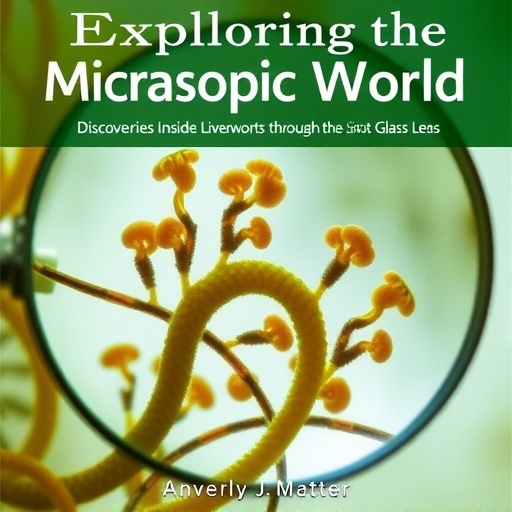In the quest to unlock the secrets of plant reproduction and improve agricultural productivity, scientists at Kobe University are making significant strides using an unconventional model organism: the liverwort Marchantia polymorpha. This humble plant, often regarded as a gardener’s nuisance for its rapid regrowth, harbors genetic mechanisms that could revolutionize our understanding of vegetative reproduction, a process critical for crop yield enhancement and sustainable bioengineering.
Vegetative reproduction enables plants to propagate through structures such as tubers and rhizomes, producing genetically identical offspring without sexual fertilization. While common in agriculture—potatoes and ginger being notable examples—our grasp on the genetic underpinnings of this reproduction mode remains limited. Recognizing this gap, Dr. ISHIZAKI Kimitsune and his team at Kobe University have focused a decade of research on the liverwort Marchantia polymorpha, decoding its genome and developing genetic tools to manipulate it with unprecedented precision.
The liverwort’s ability to spread rapidly stems from tiny, detachable propagules known as gemmae, which form in specialized cup-like structures on the plant’s upper surface. These gemma cups facilitate asexual reproduction by enabling dispersal through environmental factors like rain, wind, or animal interactions. Beyond vegetative propagation, Marchantia also shifts into sexual reproduction as daylight extends during summer months, switching growth modes to produce sexual reproductive organs. The molecular switches governing this transition, however, have long remained elusive.
A breakthrough came when the research team identified a previously uncharacterized gene, which they aptly named “SHOT GLASS,” given the distinctive morphology of gemma cups in gene-deficient plants. Experimental disruption of SHOT GLASS revealed its pivotal function: mutants failed to produce both vegetative gemma cups and sexual reproductive structures, sometimes forming aberrant, empty, shot-glass–shaped cups. This discovery highlights SHOT GLASS as an essential regulator in the differentiation and development of plant reproductive organs.
Delving deeper, the team elucidated that SHOT GLASS functions by modulating the liverwort’s leaf-like structures to suppress air chamber formation, a prerequisite for gemma cup development. Furthermore, SHOT GLASS facilitates the precise localization of key factors necessary for forming sexual organs, orchestrating the plant’s reproductive architecture with complex spatial regulation.
Intriguingly, SHOT GLASS belongs to the R2R3-MYB transcription factor family, a group of proteins well-documented in higher plants, including flowering species. Comparative genomic analyses indicated these genes trace back to a common ancestor of all land plants, hinting at an evolutionary conservation of regulatory mechanisms. When the liverwort-derived SHOT GLASS gene was introduced into flowering plants lacking their native counterparts, it restored normal meristem development, underscoring a shared genetic toolkit across vast evolutionary distances.
This functional complementation implies that the developmental pathway controlling new bud formation away from the main shoot tip—a critical aspect of plant branching and growth—is deeply conserved among land plants. Such insight not only enriches fundamental plant biology but also opens avenues to manipulate branching patterns and reproduction in crops, potentially optimizing yield and resource allocation through genetic engineering.
Beyond fundamental research, Kobe University envisions groundbreaking applications for Marchantia polymorpha. Unlike conventional crops requiring soil, liverworts can thrive in fog-based cultivation systems, offering a soil-free solution adaptable for extraterrestrial agriculture. The compact and rapidly proliferating liverwort presents an innovative candidate for space food production where traditional farming constraints are prohibitive.
Simultaneously, the research team is pioneering the use of liverworts as biofactories for synthesizing valuable chemical compounds, a domain traditionally dominated by microbes like bacteria and yeasts. The establishment of effective genetic engineering protocols for liverworts opens possibilities for sustainable and scalable production of pharmaceuticals, biofuels, and specialty chemicals, exploiting the metabolic pathways of plants rather than microbes alone.
These endeavors are firmly supported by extensive funding from Japan’s Ministry of Education, Culture, Sports, Science and Technology, the Japan Society for the Promotion of Science, and various scientific foundations. Collaboration networks including Kyoto University and Ehime University amplify the research scope and facilitate interdisciplinary knowledge exchange, fostering innovation in plant genetics and biotechnology.
The liverwort’s genetic landscape, driven by genes like SHOT GLASS, is thus reshaping our conceptual and practical approaches to plant reproduction and growth. By bridging molecular genetics, evolutionary biology, and applied biotechnology, Kobe University is positioning this modest plant at the forefront of next-generation agricultural science and space farming solutions.
As research progresses, the translation of these insights into crop improvement strategies could revolutionize food security and sustainable production paradigms, particularly in challenging environments where conventional agriculture is impractical. The simplicity, genetic tractability, and unique biology of Marchantia polymorpha promise to inform and inspire future innovations in plant science.
In a world increasingly dependent on scientific innovation to face food demands and environmental constraints, the story of SHOT GLASS and liverwort reproduction is a compelling example of how fundamental research on seemingly minor species can yield transformative knowledge with far-reaching impacts.
Subject of Research: Cells
Article Title: SHOT GLASS, an R2R3-MYB transcription factor, promotes gemma cup and gametangiophore development in Marchantia polymorpha
News Publication Date: 30-Jul-2025
Web References: http://dx.doi.org/10.1111/nph.70337
Image Credits: ISHIZAKI Kimitsune
Keywords: Marchantia polymorpha, liverwort, vegetative reproduction, gemma cup, SHOT GLASS gene, R2R3-MYB transcription factor, plant genetics, plant development, meristem, bioengineering, space crops, genetic regulation




